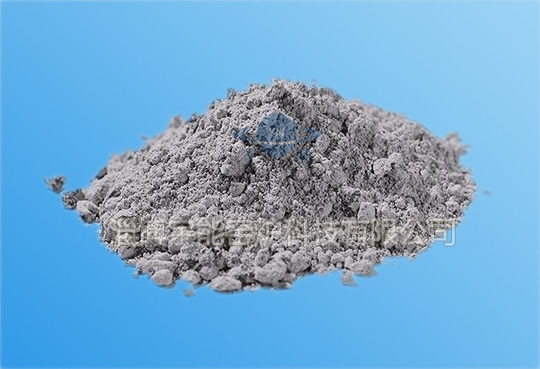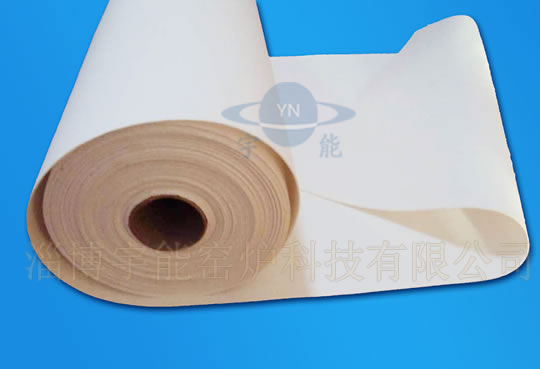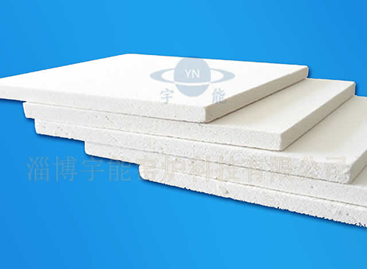Zibo Yunneng Kiln Technology Co. Ltd. Zibo Yunneng Kiln Technology Co. Ltd.
Free delivery samples
high quality assurance
Engineer's door-to-door guidance
lifelong technical support
Contact us+86159669653330086-533-5331887
Zibo Yunneng Kiln Technology Co. Ltd. Zibo Yunneng Kiln Technology Co. Ltd.
Free delivery samples
high quality assurance
Engineer's door-to-door guidance
lifelong technical support
Contact us+86159669653330086-533-5331887
Home -> News -> News -> Industry News ->
Electrofused corundum refractory can be divided into fused cast corundum brick and recombined (half recombined) electrofused corundum brick according to the manufacturing process.Fused casting corundum brick is made of industrial alumina, a small amount of soda ash and quartz powder, which is melted in the arc furnace.Then combined (semi-combined) fused corundum brick is made of crushed fused corundum particles and powder, mixed with binding agent, formed by brick press, and baked at high temperature.
Fused cast corundum products
After the alumina raw material is melted at a temperature higher than the melting temperature, it is poured into the prefabricated refractory model, and the product is formed by cooling and solidifying the crystal growth, which is called fused corundum refractory.Electric melting is generally used.
Fused corundum refractory, which is mainly made of industrial alumina, is melted and refined by the compound, then cast into the model, and the casting is solidified, annealed, cut, ground and pre-assembled.There are three main types according to their chemical mineral composition.
Fused casting a-al2o3, also known as fused a-al2o3 brick, is a fused casting refractory material with a-al2o3 as the main phase.A-al2o3 is about 95%, β-al2o3 is 5%-10%, less glass.This kind of brick has a compact structure, high fire resistance and high temperature structural strength, and good chemical stability at high temperature.-al2o3 increases the volume, which is suitable for the superstructure of cooling pool of glass kiln, non-ferrous metal smelting furnace and high temperature tunnel kiln.
Fused cast & beta;-Al2O3 brick is also called electrofusion &beta.Al2O3 brick with β-Al2O3 as main crystal casting refractory, βThe content of -al2o3 is about 99.5%, less than 0.5% of glass, and inert to alkali vapor.In an alkali free atmosphere, alkali can be easily separated and converted into a-al2o3, which is accompanied by volume contraction, which may cause the fragmentation of bricks.Fused cast & beta;-Al2O3 brick has good shock resistance, 700 degrees to room temperature air circulation of about 40 times, generally applicable to masonry glass furnace superstructure.
Casting a β-Al2O3 brick is also called electric fusion a &beta.-al2o3 brick, containing a-al2o3 and β-Al2O3 castings.A-al2o3 accounts for about 40%-50%, β-al2o3 accounts for 45%-60%, and very few glass phases.With & beta;Compared with Al2O3 products, the erosion resistance of glass liquid is stronger, and the alkali vapor resistance is better at high temperature.
The manufacturing process of fused corundum products is similar to that of fused refractory materials.The process parameters are slightly different due to different material properties, such as high melting temperature (2300-2500 ° c) and high pouring temperature (1960-1980 ° c).These characteristics determine the process points of fused corundum products as follows:
Raw material and compound.The main raw materials used for casting corundum products are industrial alumina and quartz sand.The compound material is made of industrial alumina 97% (Al2O3 content greater than or equal to 98.5%) and quartz sand 3%, and added with a small amount of additives, which are mixed in a wheel mill for 30-40min.
In the case of no additives, melting pool temperature should reach 2200-2300 degrees, in this case, the melt has a great expansion, after casting cooling will inevitably produce a large shrinkage cavity, it is difficult to obtain dense and uniform casting;At the same time, because the viscosity of alumina melt is very low, the crystallization ability is very strong, no time to exhaust the solidification, will also lead to the formation of a large number of micro holes in the casting.In order to reduce shrinkage cavity of the fused cast bricks, a small amount of admixture is added to reduce the melting temperature and thus the bulk expansion of the melt.Add different materials according to product type.
For casting a-al2o3 bricks, a small amount of flux should be added, such as introducing B2O3 of 0.25%-1%, which can not only accelerate melting engineering, but also improve the viscosity of melt.
For casting βAl2O3 brick type and casting a βNa2O should be added to the -al2o3 brick, and the carbon content is generally 5.24%. However, in the actual melting process, due to the high temperature evaporation of Na2O, dust emission and operating conditions, the Na2O in the ingredients often has a large loss, so when calculating the ratio of ingredients, the addition amount of soda ash or Na2CO3 should be higher than the theoretical value.Fused cast & beta;-al2o3 brick ingredients can only contain no more than 5.2% Na2O content, casting a βThe Na2O content in Al2O3 brick is controlled at 3.5%.However, the content of SiO2 should be controlled at 1.1% to 1.5%. This is because although SiO2 can improve the melt viscosity and reduce the crystallization capacity of Al2O3, too much SiO2 will increase the content of amorphous glass phase and adversely affect the high-temperature service performance of products.
In addition to the blending material, the charging material also contains recycled wastes, such as waste castings, risers, and foreign clean corundum fragments, but the quantity shall not exceed 30% of the loading quantity.
Smelting and casting of products.Fused alumina products in our country contains C0.03%0.55%, similar foreign products is only 0.005%, the existence of C will reduce the density and thermal shock resistance and erosion resistance, increase the tendency of shrinkage crack and the formation of air bubbles in the glass, so you need to reduce the low carbon content as much as possible, at the same time, you have to limit the dyeing oxide (Fe2O3, TiO2), H20, SO2, N2 content, etc.Therefore, it is reasonable to adopt the oxidation and melting production process, and at the same time add oxidant and blowing oxygen, blowing oxygen in the melting process can play a dual role of stirring and decarburization.
The oxidation electric melting method was first invented in France, which is characterized by the use of long arc. The graphite electrode on the upper part of the material USES the radiation of arc arc light to melt the material at high temperature, avoiding the contact with the molten fluid, and the working space is in oxidation atmosphere.In the melting process, it should be noted that the arc of oxidation melting should not be too long, generally 30-50mm, because the arc voltage and arc length are linear.However, with the increase of arc voltage, the grain size of corundum crystal decreases and reaches 230v, and the casting density decreases.At the same time, the melting time is reduced to a minimum to avoid carbon accumulation;Secondly, dust removal and ventilation should be done to ensure the oxidation atmosphere in the furnace.
When all the materials are melted and the melt surface is clean, the pouring can be carried out.The mold is cast before pouring.The temperature of melt pouring should be controlled at 1960-1980 degrees. In order to improve the casting density, layer can be poured in layers and layer can be poured in 10-20min. When the current surface temperature of the first pouring is cooled to 1680-1700, the next layer can be poured.The density of castings can be improved by properly setting the pouring mouth and removing the castings with large porosity distribution.
During pouring, the melt should not only ensure good fluidity, but also avoid overheating, because overheating will cause the melt to absorb gas, the shrinkage rate will increase correspondingly after casting into the mold, and the casting will produce shrinkage cavity and crack.
Casting cooling.The cooling and cooling process of casting can be divided into four stages: flow of melt (pouring), heat dissipation, solidification and hardening of melt (crystallization) and cooling of hardened casting.In melt hardening engineering, its structure is being formed.In the early stage, the skin temperature of the casting drops sharply, and the melt dissipates heat rapidly to the model, forming extremely dense parts, precipitating crystal phase and forming the microcrystalline and mesocrystalline regions of the casting.The remaining melt is mainly concentrated in the middle part of the casting near the pouring surface, and the coarse crystal structure is formed later.As crystallization begins to expand from the edge to the center, when the crystallization around the casting hardens and begins to cool, the casting center is still a high-temperature liquid melt, and the temperature difference between the edge and the center is quite large, which is bound to produce the stress of forming cracks in the casting. The greater the difference between the internal and external hardening speed, the greater the thermal stress.Therefore, the cooling process of castings is of great significance to the quality and structure of castings.
The annealing of the casting after stripping is to control the hardening (crystallization) and cooling rate of the casting.There are two ways of annealing: natural annealing and controllable annealing.Natural annealing is to cool the casting steadily and slowly by relying on the good heat insulation layer outside the casting. The cooling rate can be adjusted by the thickness of diatomite or expanded vermiculite layer outside the casting mold.Controlled annealing means that the castings with hardened skin are removed from the casting mold or put into the small tunnel kiln with mold and cooled slowly according to the prescribed annealing curve.
Mechanical processing of products.Qualified products of fused cast corundum refractory treated by annealing must be machined before entering the warehouse.Due to the high hardness and strength of corundum, diamond tools are used for processing.After cutting, grinding, punching and other procedures, the casting products have precise geometric shape, smooth and flat surface, and the installation of precise size requirements.
Combined with fused corundum products
Electrofused corundum clinker is used as granule material, electrofused corundum powder or sintered corundum powder is used as matrix, and then combined with sintered products, the key points of production technology are: treatment of raw materials of electrofused corundum.When using brown or white corundum as raw material, the frit should be crushed and selected to remove the ferrosilicon alloy or other impurities contained in the brown corundum.White corundum blocks should be separated from sodium aluminate and other low-melting materials which are flake crystals. Due to their low density, these impurities usually float on the surface of corundum blocks and are easy to identify.Corundum contains a small amount of harmful ingredients, which will cause poor sintering or cracking of the products. Therefore, it should be calcined in advance before use.Ferrosilicon alloy pick a net at the end of the 500-1000 degrees oxidation decomposition into Fe2O3 and SiO2, containing titanium oxide minerals into TiO2 (rutile) and so on, have large volume expansion, presintering, make the decomposition, oxidation reaction brought about by the failure stress relief in the process of presintering, avoiding the products when firing because these impurities cracking caused by the expansion of reaction of the mineral products.
Due to its large size, the fused corundum blocks should be smashed by falling hammer or other methods, and then crushed and sifted for storage according to different particle sizes.Due to high hardness of fused corundum and difficulty in fine grinding, ball mill or vibrating ball mill should be used for wet grinding to reach <40um or finer <10um.
Ingredients, mixing and molding.Particle matching should be based on the principle of compact stacking, using multistage ratio, reduce intermediate particles, increase the amount of fine powder (including a certain amount of ultrafine powder), which is conducive to improve the density and sintering of products.Adding a certain amount of binder, mainly aluminum phosphate, phosphoric acid, aluminum chromium phosphate, cellulose, pulp waste liquid.Among them, active phosphate is the most promising one.The mud should be mixed evenly and the water content should be about 3%-4%.Compact brick is obtained by high pressure molding.
Firing.Electrofused corundum products have high purity and are difficult to sintering.Firing kilns depend on the scale of production.Small batch production, high temperature batch kiln is appropriate, batch stable production can use small high temperature tunnel kiln.
Relevant Product Display
 High alumina ramming castable PA-852
High alumina ramming castable PA-852
 LT-5C Series of heat-resistant and wear-resistant single layer lining ..
LT-5C Series of heat-resistant and wear-resistant single layer lining ..
 Ceramic fiber paper
Ceramic fiber paper
 Standard aluminum silicate plate
Standard aluminum silicate plate
Relevant information
Hotline